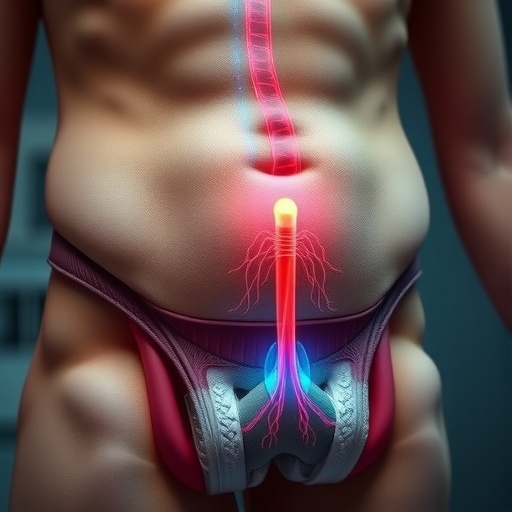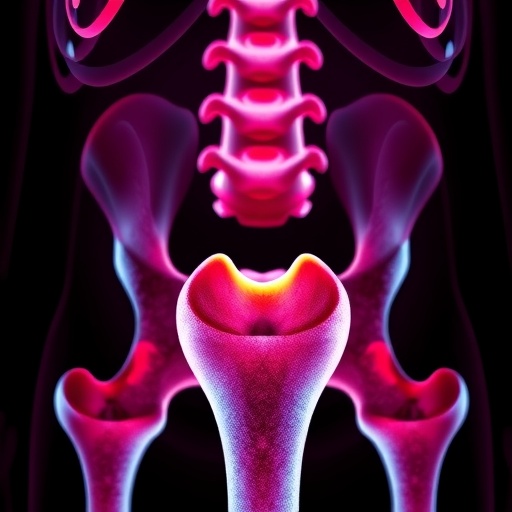
In the complex realm of pediatric urology, testicular torsion remains a critical surgical emergency that demands prompt diagnosis and intervention to preserve testicular viability. Recent advancements in imaging technology have opened new avenues for diagnosing this condition, particularly in the delicate context of the pediatric population. A new study by Sams, DiBiasio, Ayyala, and colleagues, published in Pediatric Radiology, delves into the utility of cine clips of the spermatic cord as a diagnostic tool for testicular torsion, presenting a significant leap in pediatric diagnostic imaging techniques.
Testicular torsion occurs when the spermatic cord becomes twisted, obstructing blood flow to the testis. This condition is most common in adolescents but can also occur in prepubescent boys. Early diagnosis and swift surgical intervention are paramount in preventing irreversible damage and potential loss of the affected testis. However, accurately diagnosing torsion is notoriously challenging, particularly in younger patients who may lack the ability to articulate their symptoms clearly. Traditional methods often rely heavily on physical examination and static imaging, which can lead to delayed or inaccurate diagnoses.
The study introduces a novel approach that utilizes cine clips, a dynamic form of imaging that captures motion over time, highlighting the vascular supply of the spermatic cord. This dynamic assessment allows for real-time evaluation of blood flow and can significantly enhance the clinician’s ability to identify torsion. Unlike static imaging techniques, which may present a limited view, cine clips provide insight into the functional status of the vessels supplying the testis. By documenting continuous blood flow as opposed to relying on a single snapshot moment, physicians can make more informed decisions regarding the necessity for surgical intervention.
.adsslot_AqCrvDuw4P{width:728px !important;height:90px !important;}
@media(max-width:1199px){ .adsslot_AqCrvDuw4P{width:468px !important;height:60px !important;}
}
@media(max-width:767px){ .adsslot_AqCrvDuw4P{width:320px !important;height:50px !important;}
}
ADVERTISEMENT
The methodology employed by the researchers involved a comparison of traditional imaging techniques, such as Doppler ultrasound, with the innovative approach of utilizing cine clips. The researchers conducted a retrospective review of cases where testicular torsion was suspected and the outcomes were analyzed based on imaging modalities used. Notably, the utilization of cine clips yielded a higher rate of accurate diagnoses compared to traditional methods, demonstrating their potential effectiveness in clinical practice.
One of the study’s key findings was the enhanced visualization of the spermatic cord’s blood vessels through the cine clips. The results suggested that the dynamic images could lead to quicker identification of abnormal flow patterns indicative of torsion. This capability could markedly reduce the time between diagnosis and treatment, ultimately improving patient outcomes. Clinicians involved in the study noted that the ease of capturing and interpreting cine clips was an advantageous feature, as it can be readily integrated into existing radiological practices without requiring extensive training.
Furthermore, the research highlights the importance of education in pediatric emergency departments regarding recognizing symptoms and understanding imaging findings related to testicular torsion. Equipping healthcare providers with knowledge about the benefits of using cine clips could foster a more proactive approach to diagnosis in critical situations. Early identification of testicular torsion can significantly impact not just the preservation of the testis but also the overall health and well-being of the affected child.
Despite its promising results, the study acknowledges potential limitations. Factors such as operator-dependent variability in imaging quality and interpretation can influence outcomes. However, the researchers advocate for further studies to refine the technique and establish standardized protocols that healthcare facilities can adopt. Enhancing training for clinicians and radiologists in utilizing cine clips could fortify the diagnostic chain, leading to improved patient outcomes and reduced rates of misdiagnosis.
In conclusion, the utility of cine clips for diagnosing testicular torsion in pediatric patients represents a significant advancement in emergency medicine and radiological practices. This innovative approach not only enhances the visibility of the spermatic cord but also empowers clinicians to make more accurate, timely decisions, crucial in the management of this acute condition. As the medical community continues to embrace technology’s role in diagnosing and treating complex conditions, studies like that of Sams and colleagues pave the way for enhanced patient care protocols and outcomes.
It’s crucial for ongoing research to explore the long-term impacts of adopting such imaging technologies in routine practice. The findings from this study are just a stepping stone, urging further investigation and potential integration of cine clips into pediatric urologic assessments. The hope is that with broader application and recognition of these methods, health outcomes for children experiencing testicular torsion can be dramatically improved.
As we move forward, it becomes increasingly clear that innovation in medical imaging will play a fundamental role in transforming how we approach critical health issues in pediatrics. The use of dynamic imaging techniques, as highlighted in this research, sets a precedent for future studies and encourages the pursuit of further technological advancements that can support this vulnerable patient population.
The study by Sams and colleagues is a powerful reminder of the importance of adaptability in medicine. Embracing new technologies and methods not only assists in better outcomes but also inspires a culture of continual improvement in pediatric emergency care. The specialized nature of the pediatric patient population necessitates ongoing dedication to innovation, making research like this a vital component of progressive healthcare.
Patient safety, effective treatments, and timely intervention remain at the forefront of pediatric care, and the adoption of advanced imaging techniques is illustrative of ongoing efforts to safeguard these principles. As awareness spreads regarding the relevance of cine clips for assessing conditions like testicular torsion, the medical community stands poised to enhance diagnostic accuracy and patient outcomes in this critical area of pediatric health.
Subject of Research: The utility of cine clips of the spermatic cord in diagnosing testicular torsion in the pediatric population.
Article Title: Utility of cine clips of the spermatic cord in the diagnosis of testicular torsion in the pediatric population.
Article References:
Sams, C., DiBiasio, E., Ayyala, R. et al. Utility of cine clips of the spermatic cord in the diagnosis of testicular torsion in the pediatric population. Pediatr Radiol (2025). https://doi.org/10.1007/s00247-025-06312-4
Image Credits: AI Generated
DOI: https://doi.org/10.1007/s00247-025-06312-4
Keywords: pediatric urology, testicular torsion, cine clips, diagnosis, imaging techniques, pediatric emergency care
Tags: advancements in pediatric radiologychallenges in diagnosing testicular torsioncine clips in medical diagnosticsdynamic imaging for testicular conditionsearly intervention in testicular torsioninnovative diagnostic tools in urologyPediatric Emergency Medicinepediatric urology imagingpreserving testicular viabilityspermatic cord imaging techniquessurgical emergencies in childrentesticular torsion diagnosis





